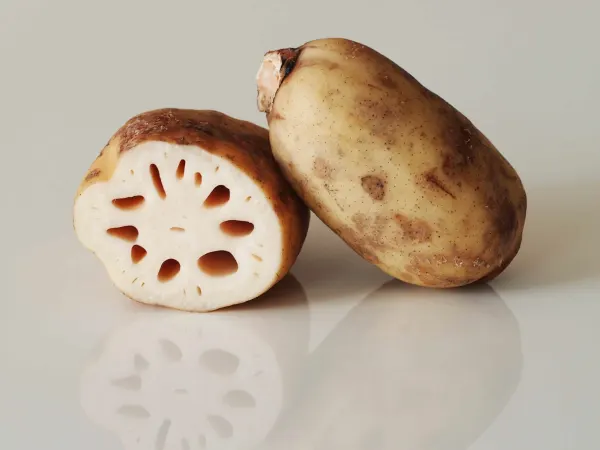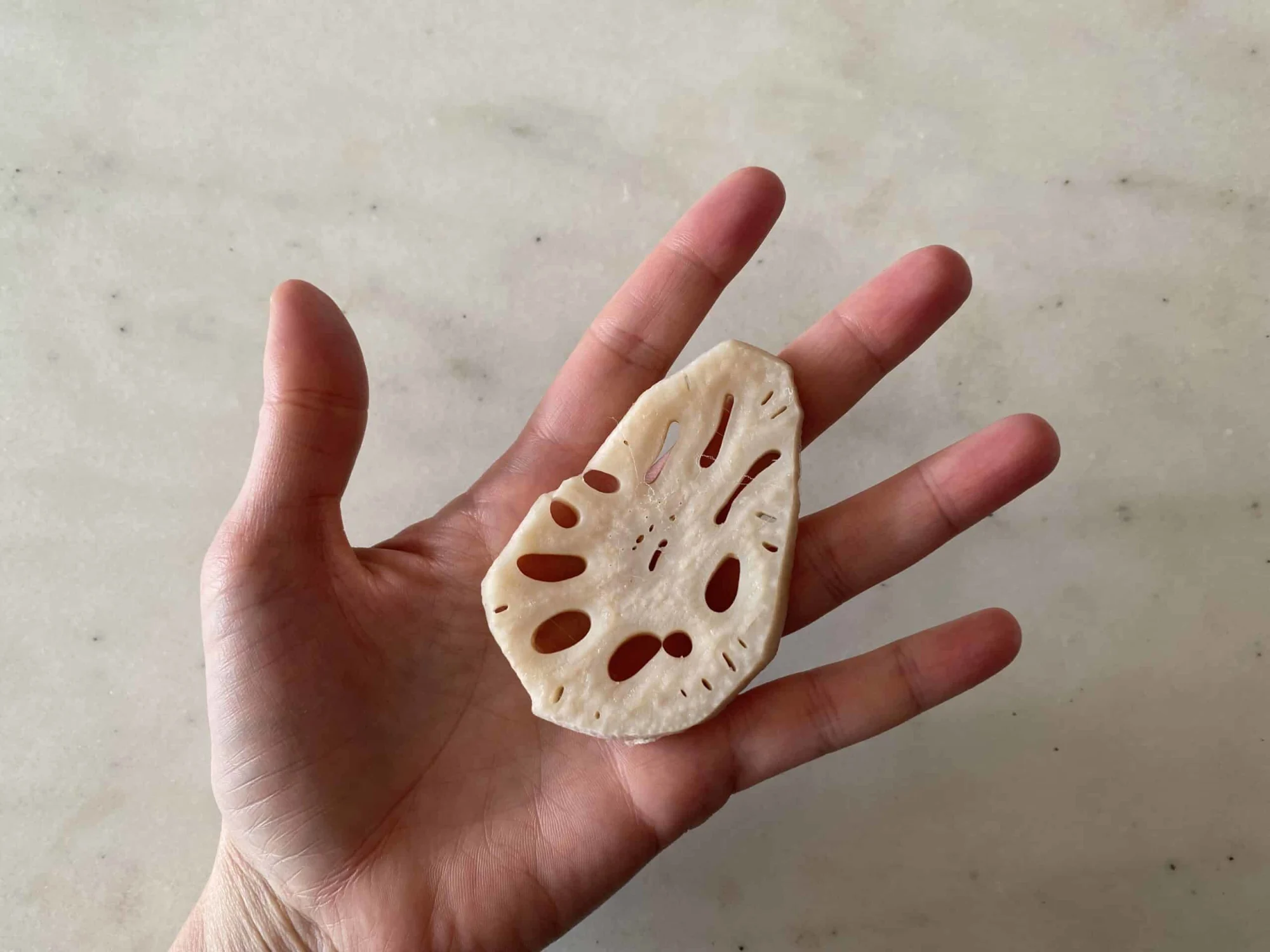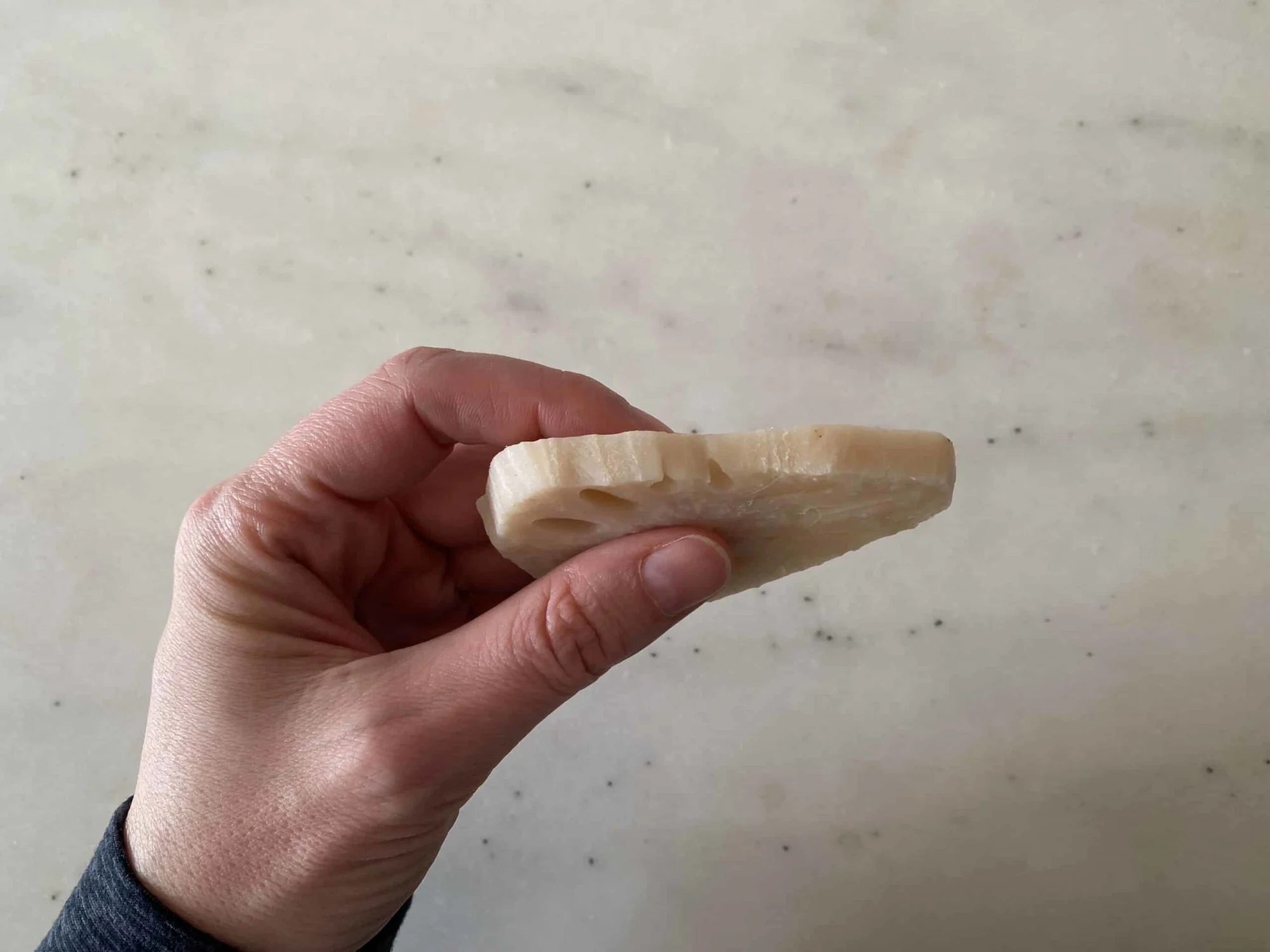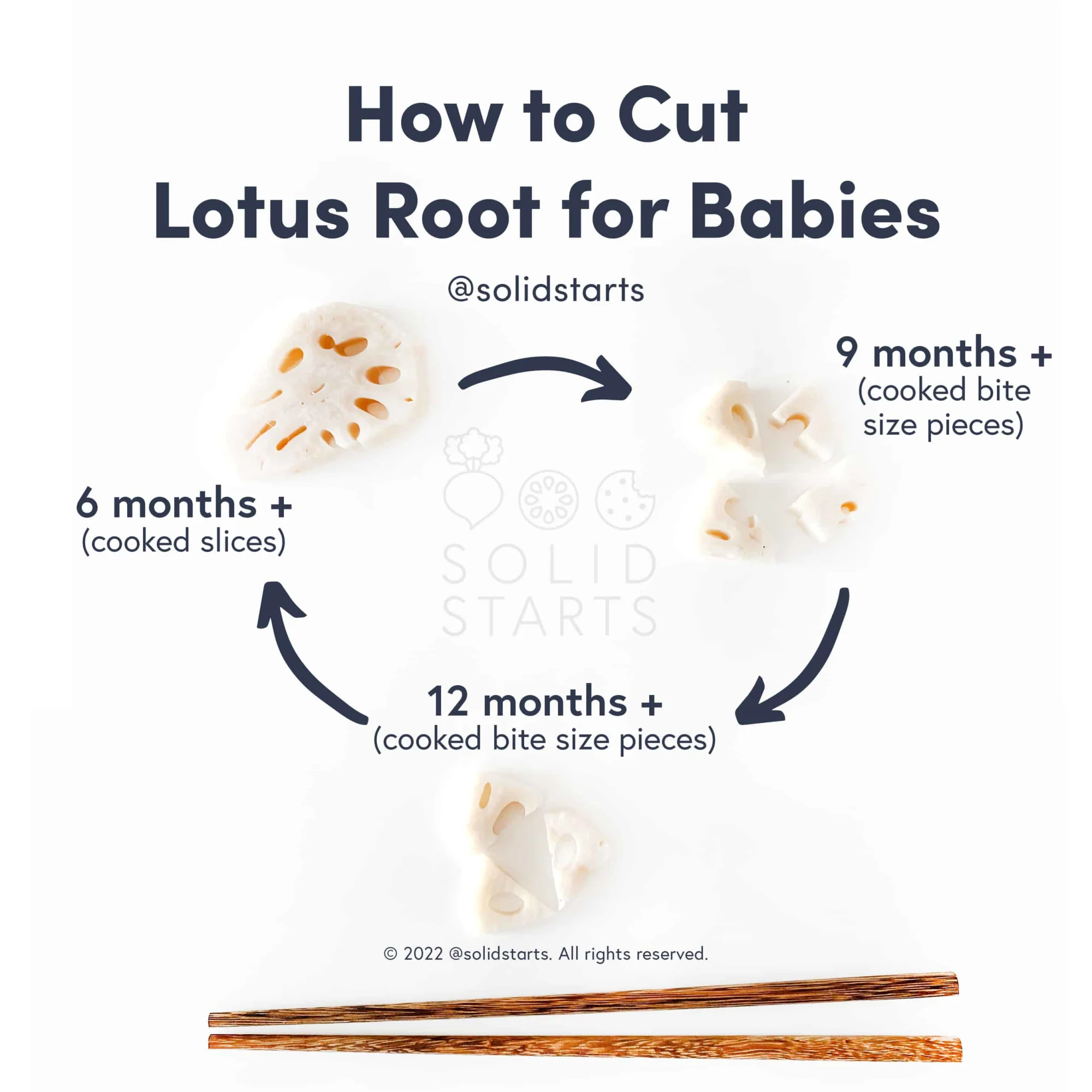Acceda a la base de datos First Foods® en Solid Starts App.
Leer másRaíz de loto
Vegetal
Sugerencia de edades
6 meses
Alto contenido de hierro
No
Alérgeno común
No

When can babies have lotus root?
¡Lo sentimos, esta página aún no está disponible en español! Estamos trabajando tan rápido como podemos para traducir todo nuestro contenido, gracias por tu paciencia y apoyo.
Cooked lotus root may be introduced as soon as baby is ready to start solids, which is generally around 6 months of age. Avoid serving raw lotus root due to the risk of foodborne illness.
How do you introduce lotus root to babies with baby-led weaning?
Cada bebé se desarrolla a su propio ritmo, y las sugerencias que ofrecemos sobre cómo cortar o preparar determinados alimentos son generalizaciones para una amplia audiencia.
6 months+:
Offer thin slices of peeled, cooked lotus root for baby to hold and munch on. Hold out the slice in the air if baby needs help grabbing it. Note that lotus root never fully softens, even when cooked for longer periods of time. Aim to get the root fork-tender, and never serve raw lotus root due to the risk of foodborne illness and choking. You can also serve congee with cooked grated lotus root or lotus root powder stirred in.
9 months+:
Serve bite-sized pieces of peeled, cooked lotus root. If you’d like to keep serving cooked lotus root in large, thin slices, feel free to do so—this larger shape offers a great opportunity for learning how to bite, tear, and spit out food when it becomes too much in the mouth, all essential eating skills.
12 months+:
Continue serving bite-sized pieces of peeled, cooked lotus root, either on their own or as part of shared meals like soups and stir-fries.
24 months+:
As the toddler’s chewing skills mature, you can offer fried lotus root chips in moderation.


Our comprehensive Starting Solids course takes you step-by-step through baby’s solid food journey.
¡Lo sentimos, esta página aún no está disponible en español! Estamos trabajando tan rápido como podemos para traducir todo nuestro contenido, gracias por tu paciencia y apoyo.
Videos
Is lotus root a common choking hazard for babies?
Yes. Lotus root is firm and challenging to chew, qualities that increase choking risk. To minimize the risk, slice thinly and cook until softened. As always, make sure you create a safe eating environment and stay within an arm’s reach of baby during meals. For more information on choking, visit our sections on gagging and choking and familiarize yourself with the list of common choking hazards.
Is lotus root a common allergen?
No. Allergies to lotus root are rare, but have been reported. Individuals with Oral Allergy Syndrome, and particularly those who are allergic to grass, may also be sensitive to lotus root. Oral Allergy Syndrome typically results in short-lived itching, tingling, or burning in the mouth and is unlikely to result in a dangerous reaction.
As you would when introducing any new food, start by offering a small quantity for the first few servings. If there is no adverse reaction, gradually increase the quantity over future meals.
Is lotus root healthy for babies?
Yes. Cooked lotus root is a highly nutritious food for babies, but raw lotus root can cause foodborne illness (namely parasites), so be sure to cook before serving.
Lotus root is high in potassium to support heart health, as well as most B vitamins, notably B6 which is essential for brain health, hormones, and nervous system function. Lotus root is also a great source of fiber for digestion and vitamin C to aid in the absorption of iron from plant-based foods. Notably, lotus root is high in flavonoids like quercetin and polyphenols, which provide antioxidant, anti-inflammatory, antiviral, and many other benefits.
Lotus root can be found fresh, canned in brine, dried, fried, pickled, powdered (also called lotus root starch), and as lotus root tea powder. Canned and pickled lotus root often contains sodium in excess of baby’s needs, so wait to regularly serve these products until after the first birthday. Lastly, lotus root jelly often includes honey, which should not be served to babies under 12 months of age due to the risk of infant botulism.
★Tip: Lotus root has a short shelf life. If you have access to the whole root, store in a damp cloth in the fridge for up to a few days. Fresh lotus root feels heavy and firm, not soft.
Can lotus root help babies poop?
Yes. Lotus root offers a good amount of fiber, specifically soluble fiber, and phenols, which together contribute to overall digestive health and bowel regularity. Note that pooping patterns can vary significantly from baby to baby. Be sure to talk to your pediatric healthcare provider if you have concerns about baby’s pooping and digestive function.
Where does lotus root come from?
Lotus root is actually the swollen stem of a flower by the same name, which is native to Asia, Australia, and North America. The root develops air pockets as it grows, which give the vegetable a distinctive lacy pattern when it is sliced crosswise. All parts of the lotus plant have been traditionally used for medicines and more, from the sweetly-scented flower, to its slender stem, to the bulbous root, to the plant’s seeds. There are many species of lotus, most of which produce some form of edible “root,” although they differ in shape, size, and texture.
Escrito y revisado por los/las siguientes especialistas
J. Truppi, MS, CNS. Certified Nutrition Specialist®
V. Kalami, MNSP, RD, CSP. Board-Certified Pediatric Dietitian and Nutritionist
K. Tatiana Maldonado, MS, CCC-SLP, CBIS, CLEC. Pediatric Feeding Therapist
K. Grenawitzke, OTD, OTR/L, SCFES, IBCLC, CNT. Pediatric Feeding Therapist
Dr. S. Bajowala, MD, FAAAAI. Board-Certified Allergist & Immunologist (allergy section)
Dr. R. Ruiz, MD, FAAP. Board-Certified General Pediatrician & Pediatric Gastroenterologist
Consejos de expertos directo a tu bandeja de entrada
¡Suscríbete y recibe correos semanales con recetas, consejos y más!
Copyright © 2026 • Solid Starts Inc


